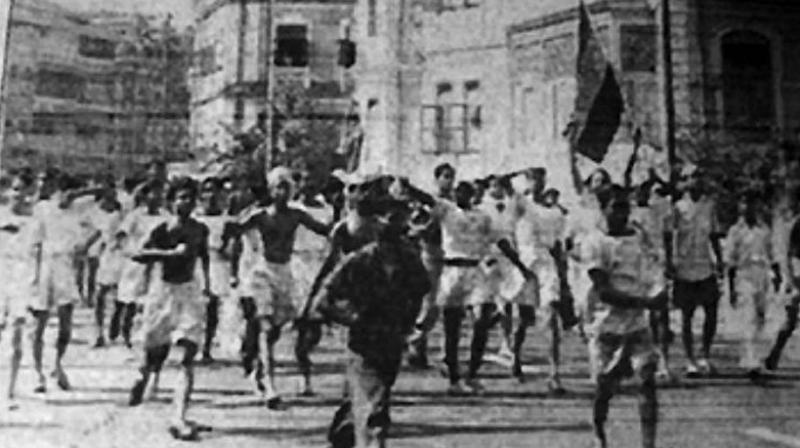Precursor to freedom: When the Royal Indian Navy turned against British empire
20,000 sailors, 78 ships and 20 shore establishments revolted in February 1946.

The Royal Indian Navy revolted in February 1946. The naval uprising or RIN revolt wasn’t a fly-by-night operation. It involved 20,000 sailors, 78 ships and 20 shore establishments. The leaders were M.S. Khan and Madan Singh. In fact, this wasn’t the first time the Navy had revolted. Between March 1942 and February 1946, there had been 19 RIN revolts. Perhaps the British authorities tried to play down these events, fearing that the malady would spread.
On December 1, 1945, Balai Chand Dutt formed a rebel group on the HMIS Talwar, a shore training establishment in Mumbai. They sabotaged the Navy Day celebrations by painting ‘Jai Hind’ on the walls. When the Commander-in-Chief visited on February 2, 1946, he was greeted by posters proclaiming ‘Quit India’ and ‘Jai Hind.’ Dutt was arrested but soon anti-British slogans began to appear everywhere. On February 18, the navymen took over the Talwar, and wireless communications were sent to all other ships. Soon the HMIS Hindustan, anchored off Karachi, was overpowered by the freedom fighters. The uprising spread to Cochin, Madras, Vizag and Kolkata in no time.
Sailors drove around Mumbai in vehicles carrying pictures of Subhash Chandra Bose and shouting ‘Jai Hind!’ and ‘Release INA prisoners!’ Mumbai responded with a general strike on February 20. Madras, Visakhapatnam and Kolkata followed suit. Many units of the Royal Indian Air Force and local police also went on strike. The naval uprising triggered revolts in the Indian Army in Madras and Pune. Railway tracks and roads were blocked by felled trees to sabotage the movement of troops. Baluch and Gurkha regiments refused orders to fire upon the striking sailors.
At Ambala on February 22, 600 non-commissioned airmen of the Royal Indian Air Force staged a demonstration against the firings in Bombay and Karachi.
While the communists and Aruna Asaf Ali supported the RIN revolt, Gandhi and Jinnah condemned it. The Congress and the Muslim League issued statements calling upon the Navymen to end the strike. The British Royal Navy retaliated with a vengeance, leaving several dead and wounded. After six days of stiff resistance, the sailors surrendered.
Arrests, detention, court martial and dismissals followed. An inquiry commission was appointed and a 600-page report was submitted in July 1946. (The contents are yet to be made public.) Several sailors had been martyred or wounded.
The details remained under wraps. The nationalist leaders ignored the plight of the navymen. They were busy negotiating the terms for the transfer of power. After India became independent, these freedom fighters were neither reinstated, compensated nor recognised in any way by India or Pakistan.
The naval uprising shook the very foundations of the British Empire and was a major turning point in India’s struggle for independence. The resistance offered by the INA until its surrender in 1945 followed by the naval uprising in 1946 convinced the British that they could no longer rely on the armed forces to maintain their stranglehold on India. That was when the British Prime Minister Clement Atlee announced his plans to actually quit India.
Tailpiece: The Indian Navy now has ships named after Madan Singh and B.C. Dutt. Too little too late!

